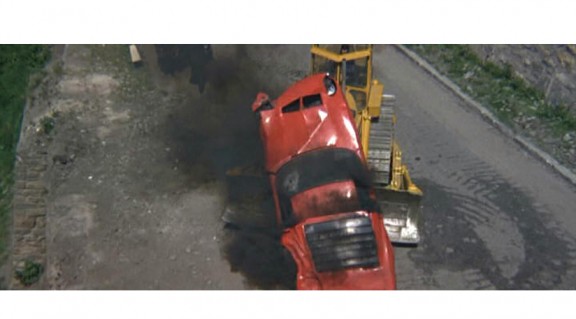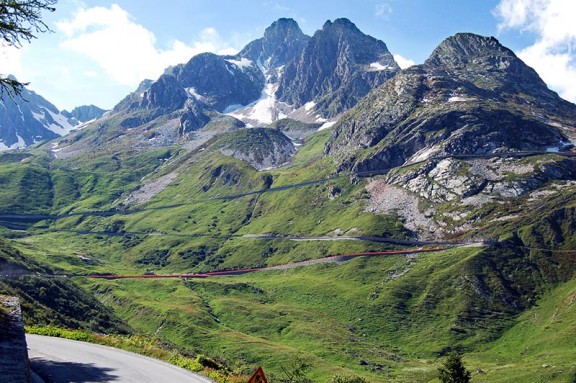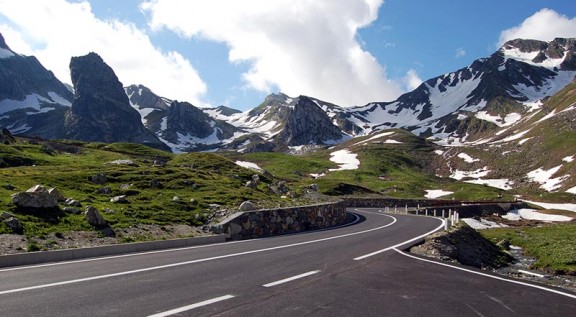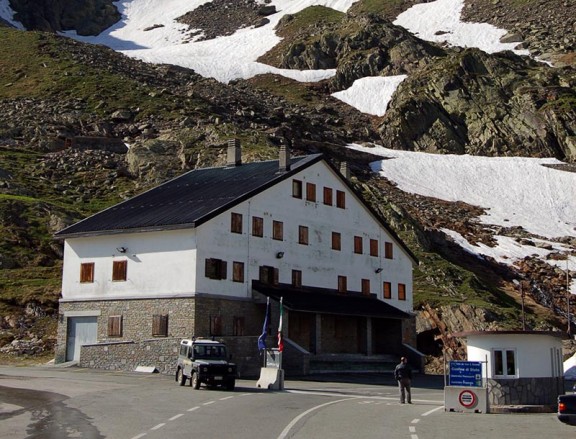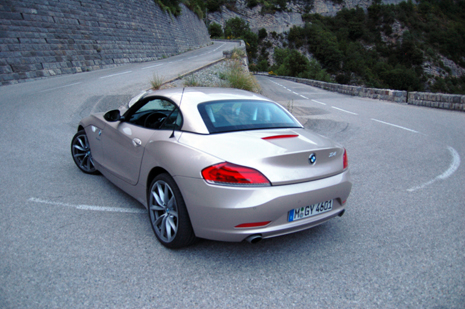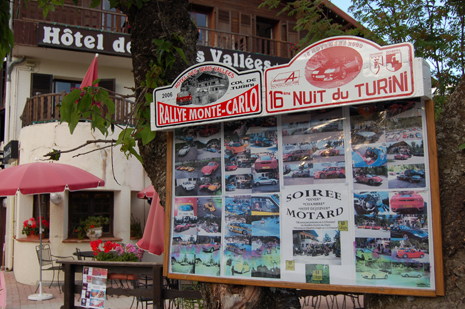Category Archives: Classic Roads
Reliving movie history on the Grand-Saint-Bernard Pass
By Budd Stanley
Who could forget the classic opening to The Italian Job? No, not Marky Mark walking through a Venetian piazza. The one from 1969 starring Michael Cain that opened with Rossano Brazzi carving his way up an Italian Alp in a classic Lamborghini Miura to the musical mixture of a Lamborghini V-12 and the song “On days like these” performed by Matt Monro. Well, that special bit of road that Brazzi was enjoying until his untimely run-in with an ill placed bulldozer, was the Grand-Saint-Bernard Pass. After my adventures on the Col de Turini (see story), I travelled north to experience the Grand-Saint-Bernard (lets call it the GSB) and ironically hit Turino at the hight of rush hour. Like Minis full of gold loot, I too struggled to get my Z4 through the endless maze of traffic filled streets, for on the other side of the city lay the alps and the town of Aosta which leads to the hidden jewel.
Linking Aosta, Italy, to Martigny, Switzerland, the pass is a much more interesting alternative to the toll tunnel that goes through the mountain. Experience has taught me when new roads are built under old ones, it’s a good sign that traffic will be light on the long road, and this was the case when I made the climb into the alpine border lands that mark the Swiss-Italian territories. Taken mid-evening on a weekday, I nearly had the entire pass all to myself, even the motorbikes and cyclists were few and far between, a trait the GSB is known for.
The route starts in the mountain valley leading north from Aosta, Italy, and begins as a winding country two-lane road. At the base of the Valais Alps, the road narrows to a single lane through a heavy wood, with rock barriers, so careful anticipation of oncoming is required. However, it all got interesting once I punched through the tree line and out into the alpine, a spectacular manmade line that traverses the side of the mountain four times before loping over the rocky crest. The expanse of the valley heeds a great view of any impeding traffic, while the narrow winding lane is littered with only a few sharp hairpins to give the driver an abundance of challenges.
Over the first crest, and I was greeted with a feast of meandering corners slowly making their way up to the famous tunnel of death just below the first peak. It is in this magnificent bowl that all the filming took place for the original Italian Job. No wonder, as this road is by far the most beautiful I’ve ever seen in terms of cosmetics, the route is a constant joyful challenge and the landscape is breathtaking. As I carved my way through the natural obstructions, I couldn’t help but whistle the iconic song to myself, with a disappointed look coming from my girlfriend from across the cabin. Yeah, it’s a cheese ball song, but at this particular moment in time, and in this particular place, no other song seemed worthy.
I have to hand it to the Italians, the condition of the road was immaculate. It looked as though it just had a complete makeover prior to my arrival. The tarmac had that fresh black color with bright white lines, and the entire route up to the peak had clean, stained-timber Armco barriers that would act more for decoration than as a savior if anyone were to leave the road. Rightly so, several pullouts have been created for drivers to take a break from sweaty palm driving, and to enjoy the rocky outcroppings, alpine meadows and brooks that make this place just that much more special. At the peak lies a mountain top lake, still half covered in ice, as well as the usual touristy kiosks, hotels and restaurants.The peak of this Alp represents the Swiss-Italian boarder, manned by two uniformed agents and a sharp looking Land Rover Defender. With a nod, I was waved through and began the decent down the Swiss side of the pass.
The Swiss side is a stark contrast to that of the Italian, as the road was very narrow and bumpy. Nerves are tested with much larger drop offs and nothing more than a few stones planted on the side of the road to keep you alive – maybe.
Arriving in Martingy, Switzerland, the end point of the pass, I had time to reflect on this beautiful stretch of road. While it may not have been the greatest driving road in the series, it still made for a truly special driving experience. Breath taking views, great road construction, history, and a great mix of aggressive and challenging driving conditions all make the GSB is a must if you find yourself in northwestern Italy, or southwestern Switzerland.
Total Distance: 74.8 km
Altitude: 2,469 m
Best time to go: Pass is only open between June and September.
Places To Stop: Pullout just over the tunnel entrance for spectacular views (27 km), Swiss Border, kiosks and Inns at the top of the Col (33 km), Pullout near tunnel ventilation shaft with a history lesson of Napoleon’s expedition and great views (36 km).
Starting Point: Coordinates 45°44′28″N – 7°18′51″E. Beginning in Aosta, Italy, take the E27/SS27 (Ave Grand-Saint-Bernard) north into the Alps. At 19 km, leave the tunnel route and follow SS27 over the pass. At 33 km is the summit as well as the Swiss border, the route then tracks down the Swiss side joining back up with the new route and continues on to Martigny, Switzerland.
Finishing Point: Coordinates 46°5′16″N – 7°3′19″E, Martigny, Switzerland.
Road Type: Smooth flowing two lane alpine road on Italian side that turns into a rough and narrow lane that slows due to terrain.
Warnings: Due to altitude and snowfall the pass is only open during summer months. The Swiss side of the pass has large drops with only the occasional stone to prevent long drops off the road.
Classic Roads: Col de Turini
Words & Photos by Budd Stanley
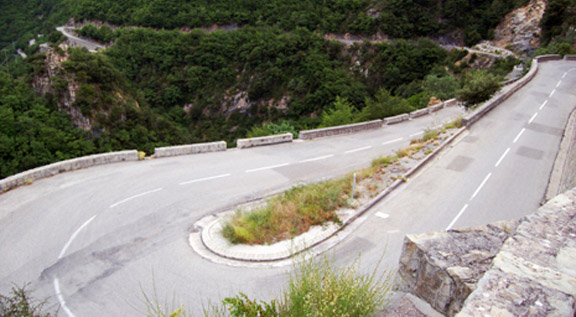
Imagine if you will, the chance to drive the Col de Turini. An exciting, once in a lifetime chance yes, but what if you were given a high-powered sports car, and you had the Col all to yourself, free to take rage on the most famous and historical of all World Rally Championship stages? Well, I just happened to be in the region and I thought it would be a shame to come all this way and not tackle the great Col de Turini. The Col is the staple, and often deciding, stage in the Monte Carlo rally.
All the great names in rallying have attacked this particularly sacred strip of tarmac. Paddy Hopkirk, Rauno Aaltonen, Sandro Munari, Timo Makinen, Marku Allen, Ari Vatenen, Tommi Makinen, Colin McRae, and Seb Loeb have all taken stage wins here to win the Monte. It is a stage that separates the men from the boys with several deadly characteristics. With an altitude change of 1200 meters, drivers are usually sent out on slicks with only a few studs punched in around the outside of the tire. That’s because the road at the bottom of the mountain is usually free of ice or snow. However once drivers start to reach the top of the Col, a fresh dusting of the slick stuff is most likely waiting for them. Changing surface conditions is then matched to the roads topographical limitations, as it’s literally carved into a rock face. Sounds like fun, so off I went to experience the Col for myself.
With a new 2009 BMW Z4 sDrive35i turbo as my weapon, I made my way up the D2565 (a particularly spectacular bit of road in itself) leading to the town of La Bollène-Vésubie, and the beginning of the Col. Much like the Eiffel region that is home to the Nurburgring, there is a aura of speed and motorsport excellence in the region. Here, drivers begin to push vehicles limits and put more emphases on the perfect cornering line. Seeing a mid 80’s Fiat Panda cutting a blind corner with the rear tire lifted into the air like an angry terrier becomes a regular sight. The D2565 is a great road, but as soon as you turn off onto the D70, the fact you are on the legendary stage is clear.
The tight and narrow road is absolutely riddled with corners. Rising out of La Bollène-Vésubie and up the rocky cliff gorge, the road is little more than a one lane ledge with a sheer rock wall on the left side, and a bottomless drop off the right side as it charges steep into the mountain. It wasn’t long until I hit the first hairpin complex, a stack of switchbacks that climb the rocky cliff like a ladder, so popular with the camera helicopters. On I drove, with no traffic in sight, rubber scars littering the road surface where S2000 cars have left their braking too late, or spun their wheels leaving the hairpins. The endless onslaught of corners continued on into the beautiful Turini forest that covers the higher altitudes.
Finally I had arrived at the top of the Col, a legendary piece of real estate where 35,000 mad and drunken French and Italian fans pummel each other with snowballs and roman candles in anticipation for their competing countrymen to rocket over the Col in a fit of snow spraying glory. There are three Inns here on the Col and the Restaurant des Trois Vallèes, is a particularly good place to grab a bite to eat and a drink, while being surrounded by rally memorabilia.
After some sentimental time on the Col, it was time to head down the D2566 towards Sospel, France. This is where things got interesting. Pulling off the Col and diving down into the forest of the south side, I noticed a sign at the side of the road with the words, “Route Barrière.“ Obviously the road was under construction, but I wasn’t going to let a little sign stop me from exploring this historic route. So on I went.
With the BMW Z4’s turbo now glowing, and the road indeed blocked, I hustled my way back up the stage, the sweet sound of the straight six echoing off both the rock wall and the cliff face on the opposite side of the gorge. Up through the hairpin complex and on to Moulinet. Turn around, and do it all again down hill, the back end of the Z4 breaking loose under the force of braking required to get the car through the tight corners. The rock walls only inches away reflected the light emitted from glowing brake discs. By the time I made it back to the bottom, the brake pedal was almost non-responsive. The concentration and skill needed to navigate a car through this lethal bit of road gave me a new respect for the men who attack this stage in absolute anger. It really does take an exceptional person to not only conquer this road, but to do it in icy conditions on slick tires. This is why Col de Turini is the greatest stage in the WRC.
Lap after lap, I had lost track of time. I cruised back into Moulinet, hoping to find some sort of accommodation, and found the entire town partying in the town square, all 250 souls. Making my way into the square to practice my grade nine level French, I couldn’t even get out a word before I had a glass of champagne and a pastry in my hand. With alcohol in my system and the nature of the road, I would be staying there for the night, whether in the car or a hotel. After asking if there was a hotel open in town, the locals told me not to worry, and my glass was refilled and a fresh pastry supplied. I was given a fully equipped apartment in town by one of the locals and was asked to rejoin for the celebration back in the square. That night I filled myself with champagne and pastries, talked of stories about the rally, and leaped over the massive bonfire burning in the square, as is tradition, making for a truly surreal experience.
The next day I was up a little later than I hoped, for obvious reasons. I walked down to the café for a much-needed espresso, and a chat with the locals I had come to know the night before. And with that it was back into the Z4, and back up the Col, headed to the next great Alp pass on my schedule. But nothing can compare to the experience I received on the Col, a once in a lifetime event.
About The Route:
Places To Stop: The village of Moulinet; famous Inns at the top of the Col; West side hairpin complex; and south side hairpin complex. Total Distance: 22.68 km (stage)
Altitude: 1,607 m
Starting Point: Coordinates 43°98′99″N – 7°32′14″E. We began in the town of La Bollène-Vésubie. Following the D70 east we wound our way to the Col, Following the traditional route south along the D2566 to the stage finish in Sospel, via the village of Moulinet.
Finishing Point: Coordinates 43°52′41″N – 7°26′57″E
Road Type: Hairpin riddled, narrow tarmac rally stage
Warnings: This road requires the absolute in concentration, nearly all corners are blind and everyone is out to best their time. Reflexes must be top level to keep the shiny side up. Serious drop-offs if the stone barriers don’t do their job.

